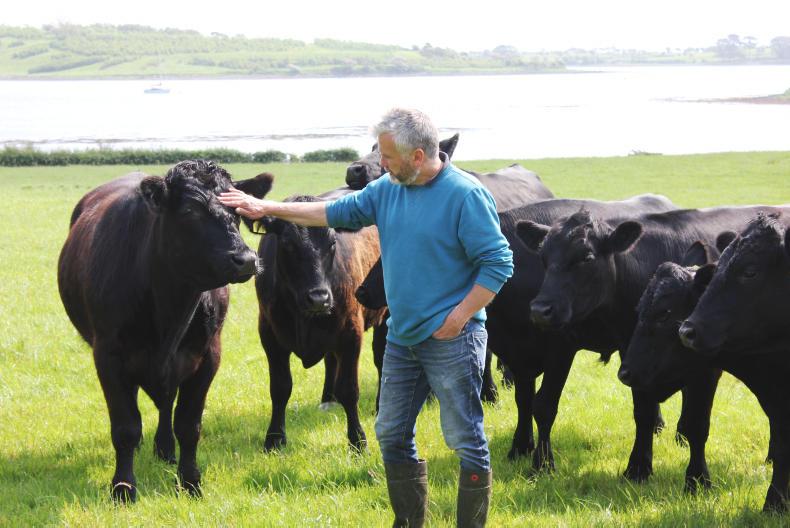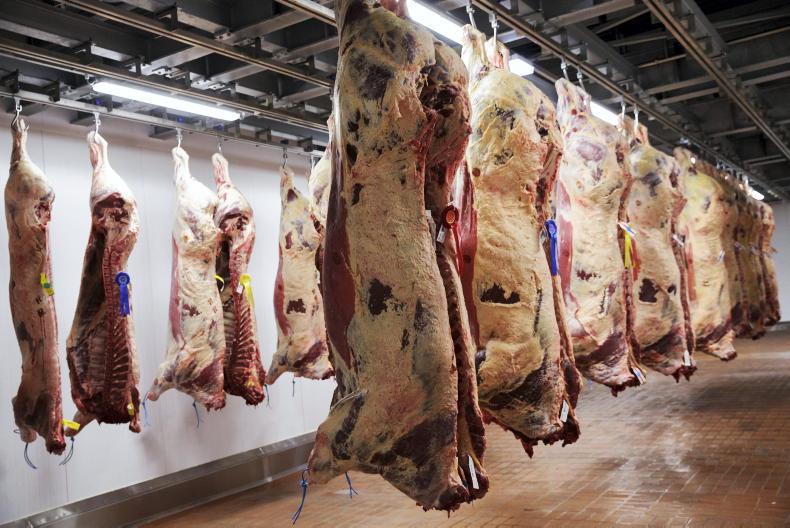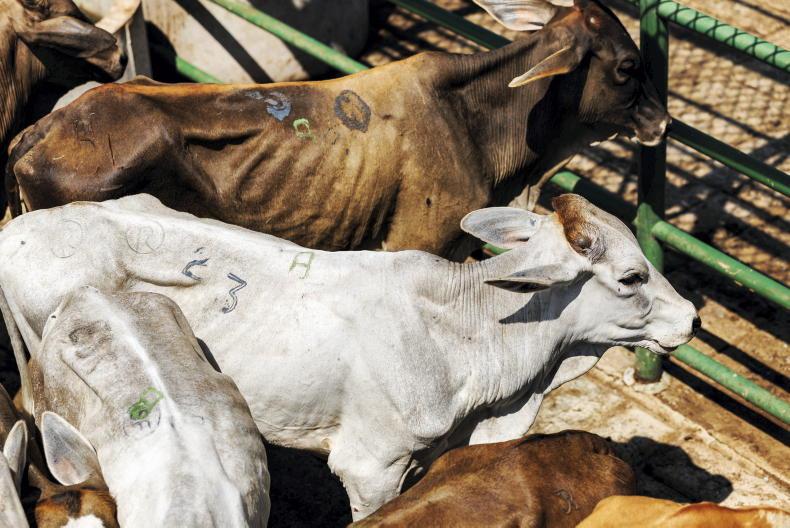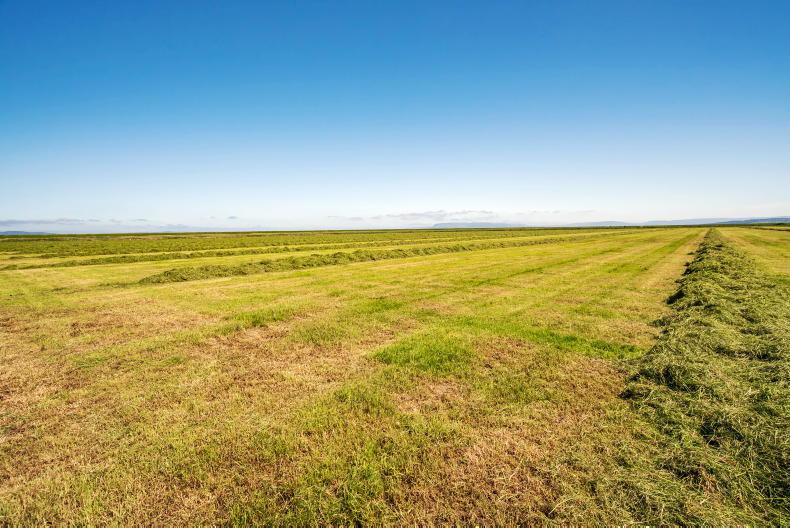To give credit where credit is due, I was most impressed with CAFRE’s response to my less-than-complimentary article on benchmarking a few weeks ago (issue dated 11 May 2019).
The speed of reaction was akin to someone unexpectedly touching a mains fencer on a damp morning, and a face-to-face meeting ironed out some wrinkles in the system.
Inaccuracies were rectified, false assumptions were corrected, submitted data was re-examined and altered accordingly, and the sheets of resulting figures now make sense, even to someone as obtuse as me.
More importantly, I now have the means to directly compare three different livestock enterprises on this farm with a fair degree of confidence.
Out-performed
What I really wanted to see was confirmation that the contract-rearing of dairy heifers out-performed the other enterprises, with breeding ewes trailing some distance behind and the beef cattle limping across the line, miles in arrears.
As usual, I got it wrong, with the sheep showing unprecedented levels of profitability (thanks largely to a contract lamb price being set when lamb trade was on fire).
Trying to directly compare sheep and cattle isn’t easy
However, I was correct on one assumption – the beef cattle showed an unimpressive gross margin (£125/head). This translated into a negative figure by the time the overhead costs were dropped off. For me, cattle fattening on this farm is little more than an expensive hobby.
I suspect that a five-year study of profits might come out in favour of the dairy heifers ahead of the sheep, although this year’s gross margin of £118/ewe could be a record that will stand for years.
Trying to directly compare sheep and cattle isn’t easy, but if we look at net margins per hectare, then it is possible to find some sort of common denominator. Net margins are what we’re left with after variable costs and overhead costs have been deducted, but before paid labour, conacre and finance has been taken account of.
I can only assume a lot of farmers know more than me about how to make money from cattle and sheep
The sheep left a net margin of £663/ha (£268/ac), and the dairy heifers left £517/ha (£209/ac). While these figures were both strongly positive, it once again poses a very big question regarding some conacre prices around the country – if I paid upwards of £200/ac for conacre, there would be very little left.
I can only assume a lot of farmers know more than me about how to make money from cattle and sheep. Perhaps it should be pointed out that I do not stock heavily, so both those figures could be moved upwards, if necessary.
Labour
What is more difficult to compare is the labour requirement between systems. Just because the sheep left a bit of money doesn’t mean I’m likely to keep 500 of them next year, since the balance between work and pleasure would be badly out of kilter, and too many sheep might be bad for my mental health.
Also, part of the relatively strong financial performance of the sheep flock is directly due to the availability of clean grazing, so maybe a small percentage of the ewe profits should be re-directed to the cattle?
It is now two years since we started to contract-rear, and it has been a largely positive experience
And how do you put a figure on the compatibility of the dairy heifers, with their ease of handling, low labour requirement and ability to clean sheep swards as effectively as any ploughed reseed?
It is now two years since we started to contract-rear, and it has been a largely positive experience.
Actually, it has been far more than that. I’d call it happy farming, because cold and clinical terminology doesn’t begin to do justice to the sense of satisfaction and wellbeing from working with these gentle animals.
In all honesty, working with this type of livestock puts a smile on your face, and allows some fun to creep back into farming. And in this day and age, I’d say that’s a priceless commodity.
Read more
Bewilderment at latest benchmarking results
Farmer Writes: keeping it simple with ewe lambs
To give credit where credit is due, I was most impressed with CAFRE’s response to my less-than-complimentary article on benchmarking a few weeks ago (issue dated 11 May 2019).
The speed of reaction was akin to someone unexpectedly touching a mains fencer on a damp morning, and a face-to-face meeting ironed out some wrinkles in the system.
Inaccuracies were rectified, false assumptions were corrected, submitted data was re-examined and altered accordingly, and the sheets of resulting figures now make sense, even to someone as obtuse as me.
More importantly, I now have the means to directly compare three different livestock enterprises on this farm with a fair degree of confidence.
Out-performed
What I really wanted to see was confirmation that the contract-rearing of dairy heifers out-performed the other enterprises, with breeding ewes trailing some distance behind and the beef cattle limping across the line, miles in arrears.
As usual, I got it wrong, with the sheep showing unprecedented levels of profitability (thanks largely to a contract lamb price being set when lamb trade was on fire).
Trying to directly compare sheep and cattle isn’t easy
However, I was correct on one assumption – the beef cattle showed an unimpressive gross margin (£125/head). This translated into a negative figure by the time the overhead costs were dropped off. For me, cattle fattening on this farm is little more than an expensive hobby.
I suspect that a five-year study of profits might come out in favour of the dairy heifers ahead of the sheep, although this year’s gross margin of £118/ewe could be a record that will stand for years.
Trying to directly compare sheep and cattle isn’t easy, but if we look at net margins per hectare, then it is possible to find some sort of common denominator. Net margins are what we’re left with after variable costs and overhead costs have been deducted, but before paid labour, conacre and finance has been taken account of.
I can only assume a lot of farmers know more than me about how to make money from cattle and sheep
The sheep left a net margin of £663/ha (£268/ac), and the dairy heifers left £517/ha (£209/ac). While these figures were both strongly positive, it once again poses a very big question regarding some conacre prices around the country – if I paid upwards of £200/ac for conacre, there would be very little left.
I can only assume a lot of farmers know more than me about how to make money from cattle and sheep. Perhaps it should be pointed out that I do not stock heavily, so both those figures could be moved upwards, if necessary.
Labour
What is more difficult to compare is the labour requirement between systems. Just because the sheep left a bit of money doesn’t mean I’m likely to keep 500 of them next year, since the balance between work and pleasure would be badly out of kilter, and too many sheep might be bad for my mental health.
Also, part of the relatively strong financial performance of the sheep flock is directly due to the availability of clean grazing, so maybe a small percentage of the ewe profits should be re-directed to the cattle?
It is now two years since we started to contract-rear, and it has been a largely positive experience
And how do you put a figure on the compatibility of the dairy heifers, with their ease of handling, low labour requirement and ability to clean sheep swards as effectively as any ploughed reseed?
It is now two years since we started to contract-rear, and it has been a largely positive experience.
Actually, it has been far more than that. I’d call it happy farming, because cold and clinical terminology doesn’t begin to do justice to the sense of satisfaction and wellbeing from working with these gentle animals.
In all honesty, working with this type of livestock puts a smile on your face, and allows some fun to creep back into farming. And in this day and age, I’d say that’s a priceless commodity.
Read more
Bewilderment at latest benchmarking results
Farmer Writes: keeping it simple with ewe lambs










SHARING OPTIONS